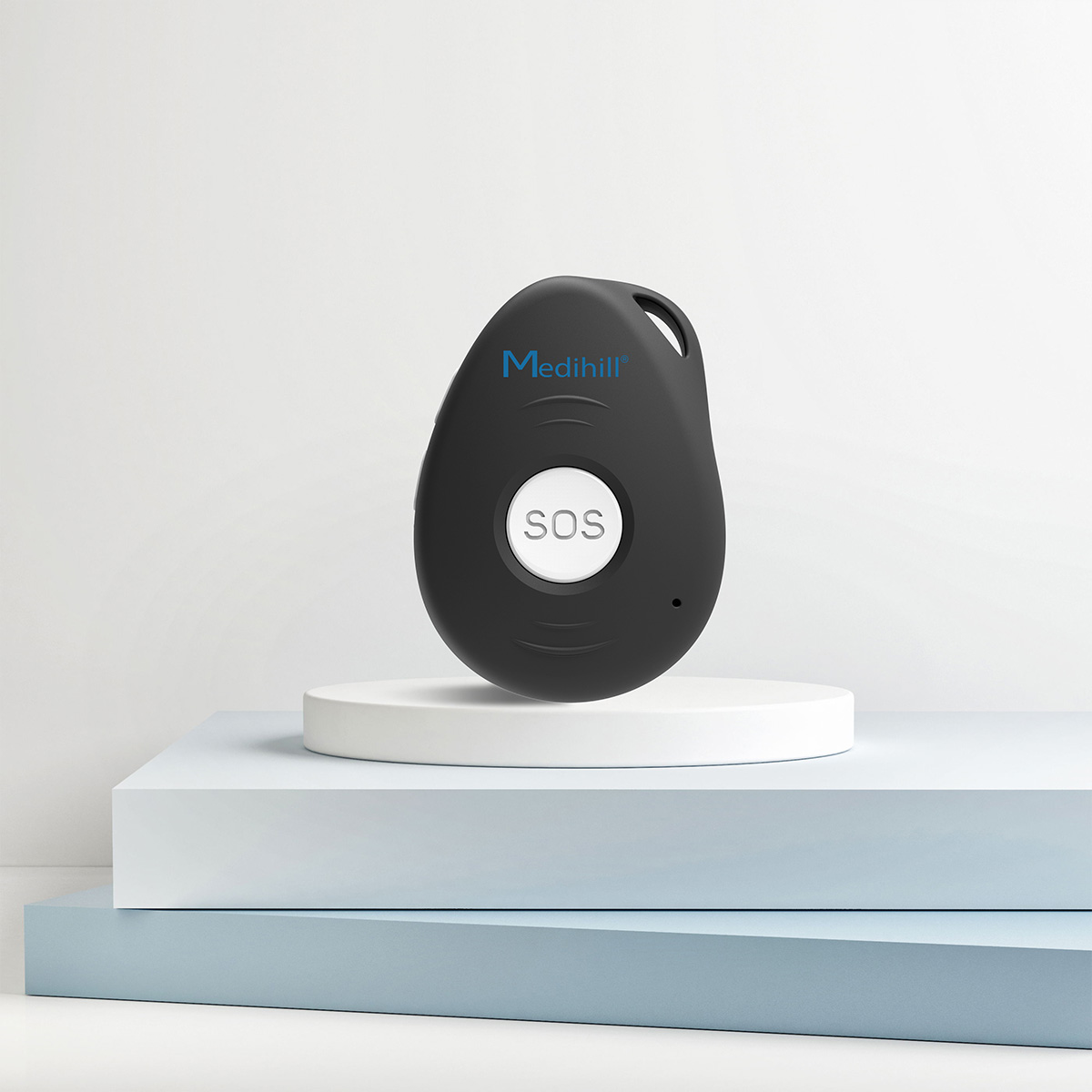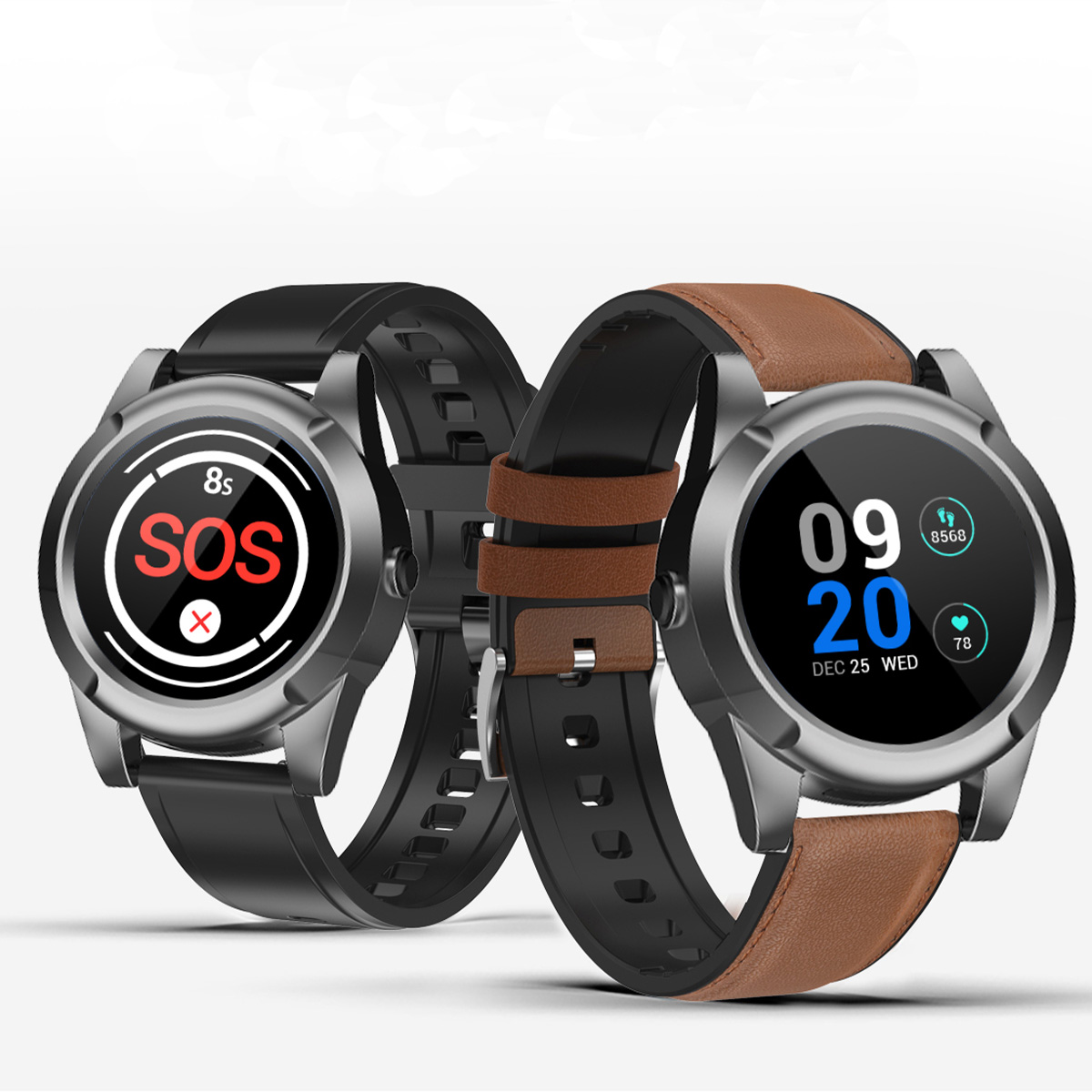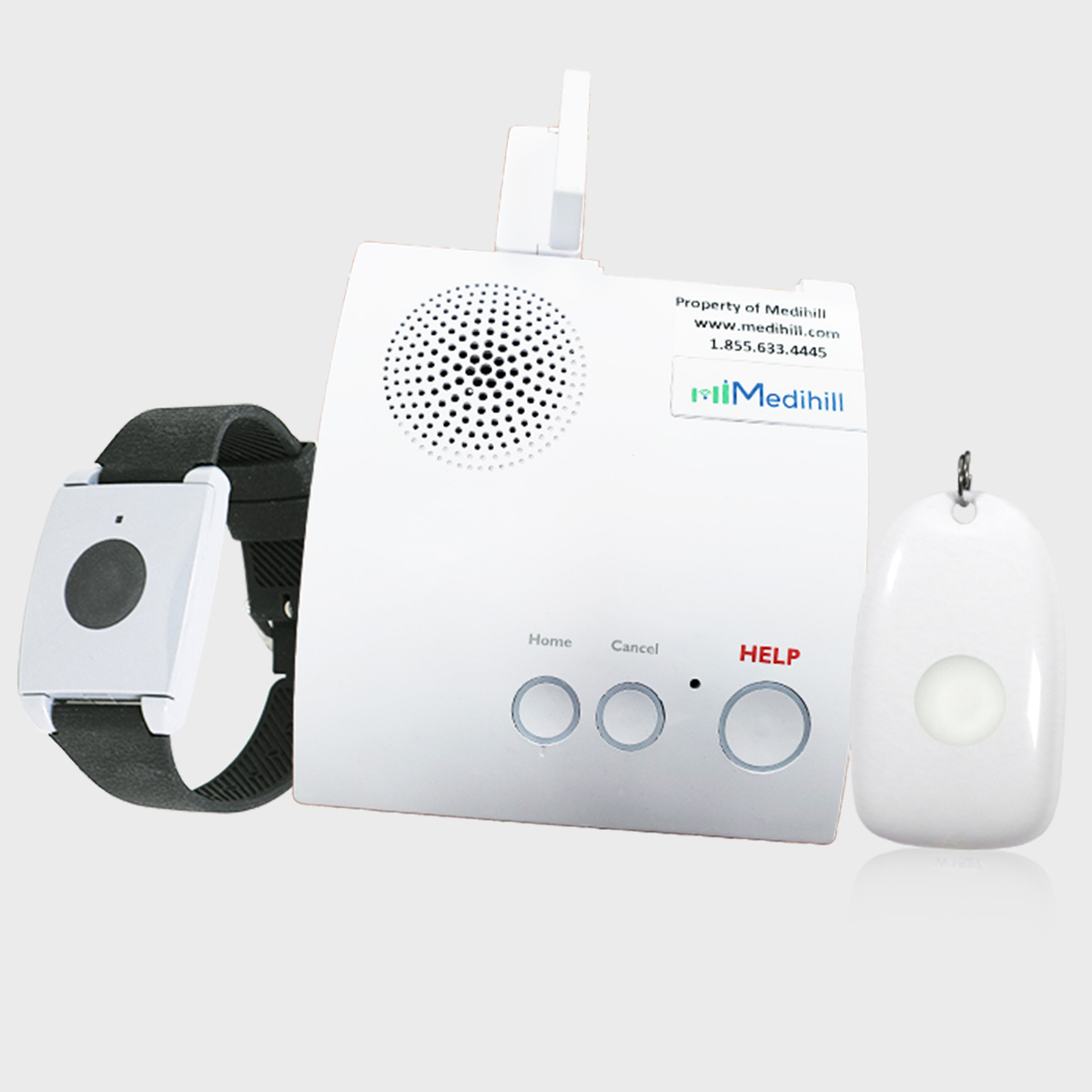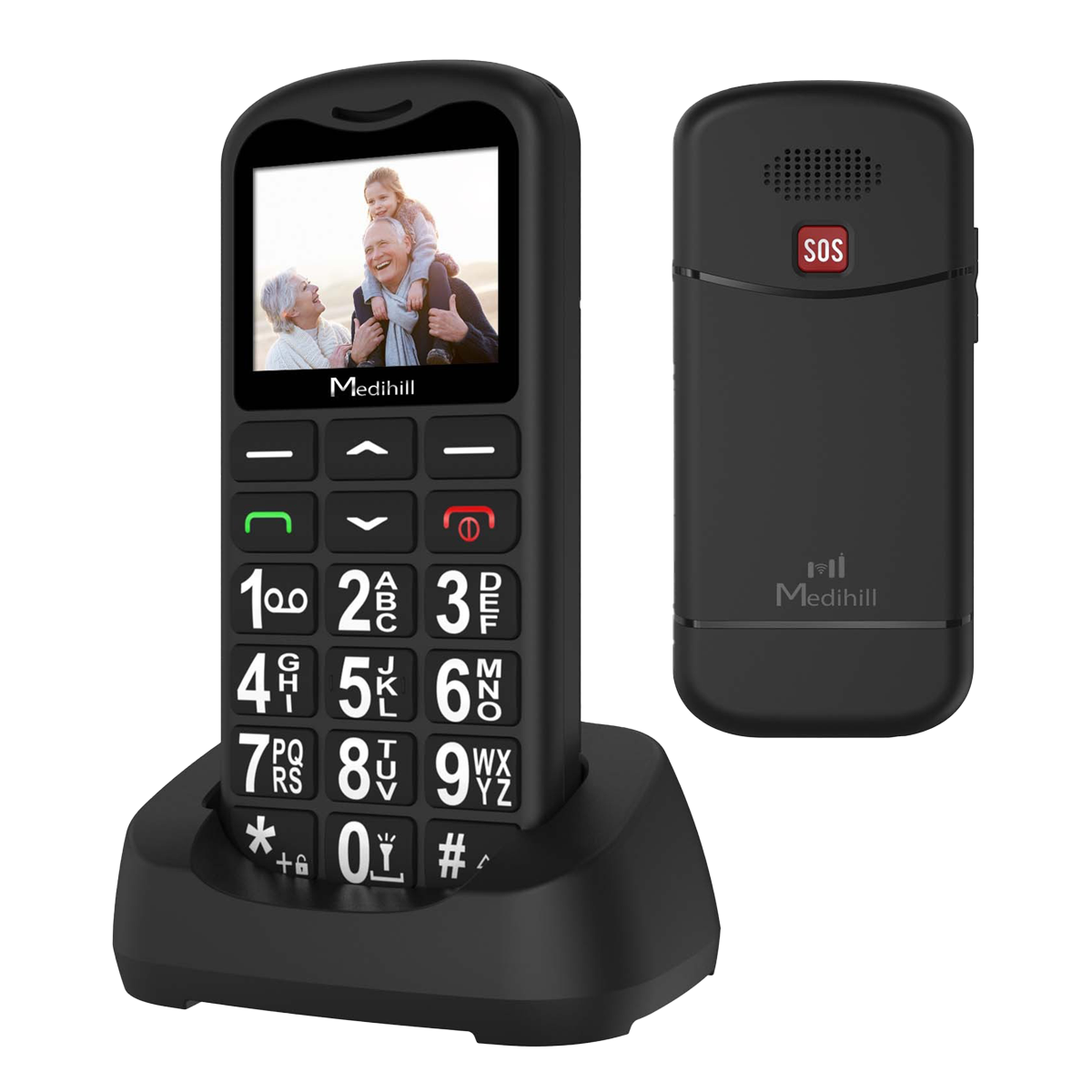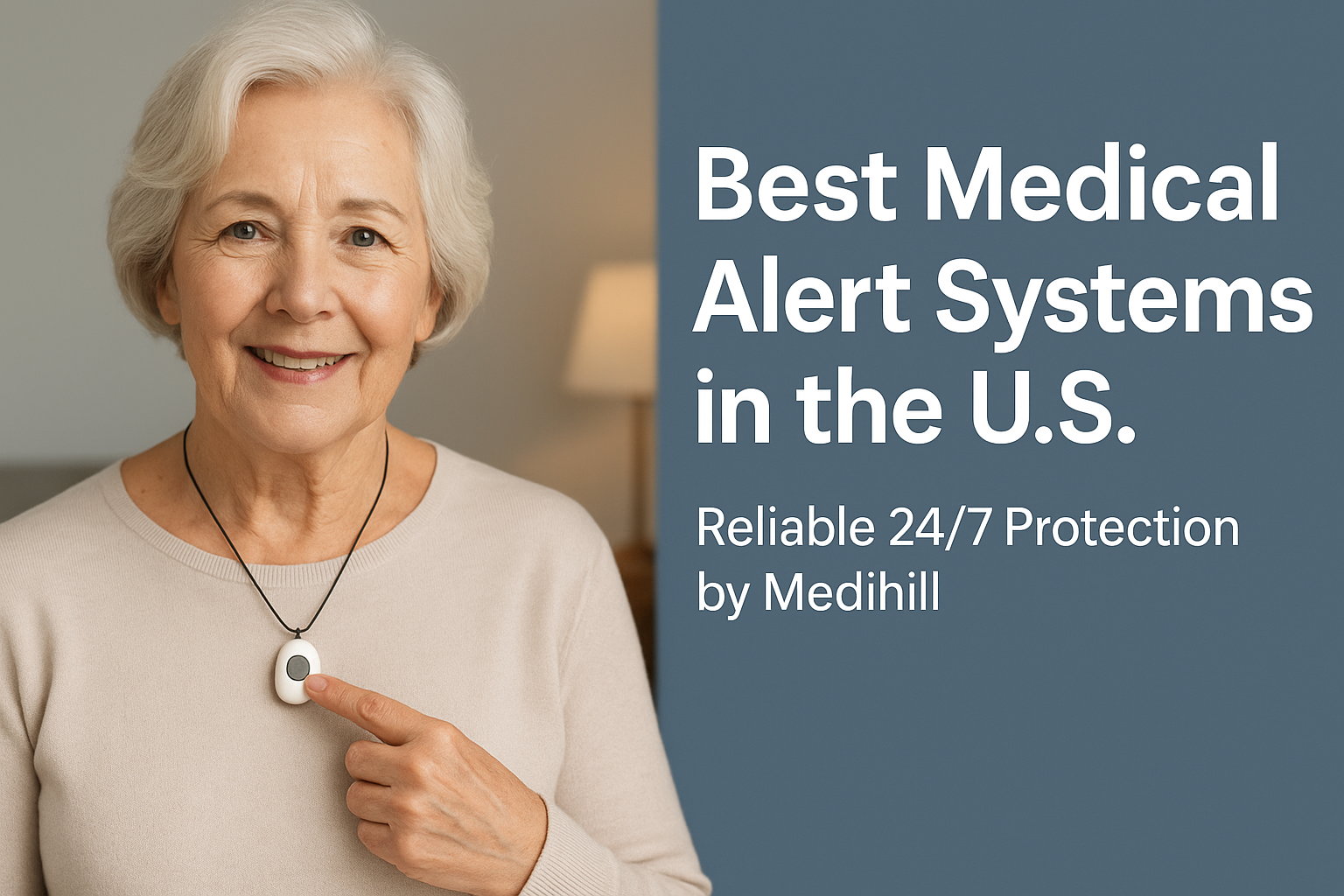In today’s fast-paced world, medical emergencies can happen when least expected. Having a robust “medical alert” in place is not just for seniors, it is a key component of peace of mind for anyone with health risks. At Medihill, we believe in proactive, accessible healthcare. In this article, we explain what medical alerts are, why they matter, what features to look for and how Medihill supports you with reliable solutions.
What is a “Medical Alert”?
A medical alerts also often referred as Personal Emergency Response Systems or Medical Alert System is a monitoring device or a service that allows a person to quickly call for help in the event of a medical emergency, fall, injury or other urgent health situation especially when the person may not be able to reach a phone or dial an emergency number themselves.
Medical Alert Functions include
Wireless Transmitters (Pendants) with SOS Button wearable in the form of a watch or necklace so that the user can press the button to trigger SOS for receiving HELP.
Two-Way Communication with emergency response team.
Advanced Fall-Detection technology that automatically send alerts if a fall is detected.
Smart GPS Tracker for when the person is outside the home, travelling or away can call for HELP during an emergency.
In short, a medical alert is about being prepared so that when something goes wrong, help is just a button-push away.
Why Medical Alerts Are Importantly in Today’s Life
1. Quicker help = Better outcomes
In medical emergencies (heart attacks, strokes, fall, etc.), the time between incident and help arriving can dramatically affect outcomes. Medical Alert Systems shorten that delay by providing an immediate link to emergency or monitoring services.
2. Greater Independence & Peace Of Mind
Many people want to live independently in their own homes being involved with their daily routines and not feeling captive to fear. Knowing that you have a medical alert system gives you confident to manage more of your daily life safely.
3. Especially helpful for at-risk groups
- Seniors living alone or with limited mobility.
- People with chronic illnesses (diabetes, heart disease, neurological conditions).
- Those recovering from surgery or with fall risk.
- Fall detection and emergencies you may not foresee
Falls are one of the common triggers for needing urgent help and in many cases the person cannot press a button. Automatic fall-detection features help in such silent emergencies.
What Feature Should You Look For?
When choosing a Medical Alert System (or service), there are certain key features that you should evaluate:
- 24/7 Monitoring
The monitoring service should be live around the clock 24/7 as emergencies is not limited to the office hours only.
2. Two-Way Communication
The ability to speak directly with a responder from the monitoring centre through the medical alert device or the pendant.
3. Range / Coverage
Especially for in-home systems, the help button should work in all relevant parts of the house, yard and more. For Portable Systems like Hotpod and Smart Watch, coverage should extend well beyond home.
4. Fall Detection
Automatically triggers when a fall is detected even if the user can’t press the button. This function should not be avoided.
5. Mobile / GPS Functionality
If you are very much outgoing and often travel, go for portable medical alert systems. It allows you to get help anywhere, anytime at your exact location.
6. Reliability & Brand Credibility
The provider should have proven infrastructure, reliable monitoring and good user feedback.
7. Ease of use
The button/pendant should be comfortable, intuitive and the installation/setup should be straightforward.
8. Adaptability to local context
It is important that emergency services, local responders and the infrastructure integrate well with the alert system. Medihill monitoring services work all over United States and in Canada.
How Medihill Fits In
At Medihill, our goal is to make high-quality personal emergency response monitoring accessible to all. Below is how we support reliable medical alerts:
- We collaborate with trusted devices and services that meet the key features above (24/7 monitoring, easy to use, fall-detection capable and GPS Tracking available).
- We advise you on choosing the right type of system depending on your living situation, health profile and budget.
- We advocate for ongoing monitoring and check-ups of the alert system devices, batteries and connectivity. All need periodic review to remain dependable.
Case Study: What to consider when purchasing a subscription
When looking for a medical alert system, some key nuances should be assessed:
1. Connectivity & Infrastructure
Ensure the alert device works in your area (signal strength, network coverage) and can reliably reach the monitoring centre.
2. Response Protocol
Confirm what happens after the alert is triggered. Who is contacted whether it be emergencies services, ambulance or a family member and how quickly the response time is.
3. Fall risk & home safety
Homes with stairs, bathrooms without grab-rails, or persons with mobility issues need systems tailored to that risk.
4. Cost vs Benefit
For many users, the value lies in the peace of mind of knowing help is available at anytime and anywhere. Considering that balance cost against this benefit.
5. Education & Training
Make sure the user and family members understands how to use the alert device. Test it periodically and ensure backup batteries/connectivity are maintained.
Action Plan: Steps You Should Take
1. Assess Your Need
What health conditions do you or your loved one have? Are fall likely? Is there a risk someone may not be able to call for help?
2. Explore Suitable Systems
Explore devices that fit your scenario (home-only vs mobile/away-from-home). Compare features like fall detection, GPS, two-way communication.
3. Check The Service Provider
Go with a provider that offers reliable monitoring, local support, clear response protocols and minimal hidden terms.
4. Install & Test
Once installed or activated, test the system (once in a month is recommended). Check the ranges (in-home device), battery, fall detection and the two-way communication.
5. Review Periodically
Over the time health status can change. It is important to reassess whether your alert system still meets your requirements or need an upgrade.
Conclusion
A medical alert system is more than just a device. It is a lifeline. Whether you live independently, have chronic conditions, are aging in place, or simply want an added layer of safety, investing in a reliable medical alert system makes smart sense. At Medihill, we are committed to supporting your every step of the way from choosing the right system, understanding how it works, to making sure it fits seamlessly into your care plans.
If you would like to talk with one of our experts, compare devices or services, or get a personalized recommendation, reach out to the Medihill team today. Better Safe than Sorry, because when every second counts, every decision matters.

